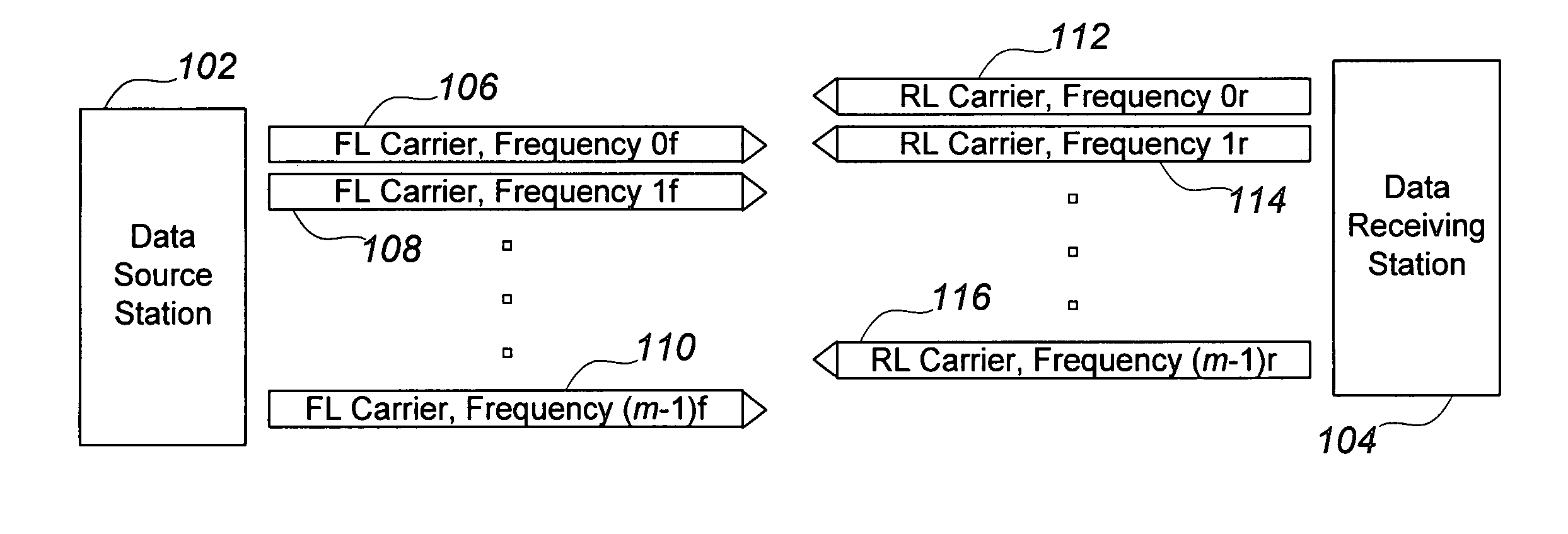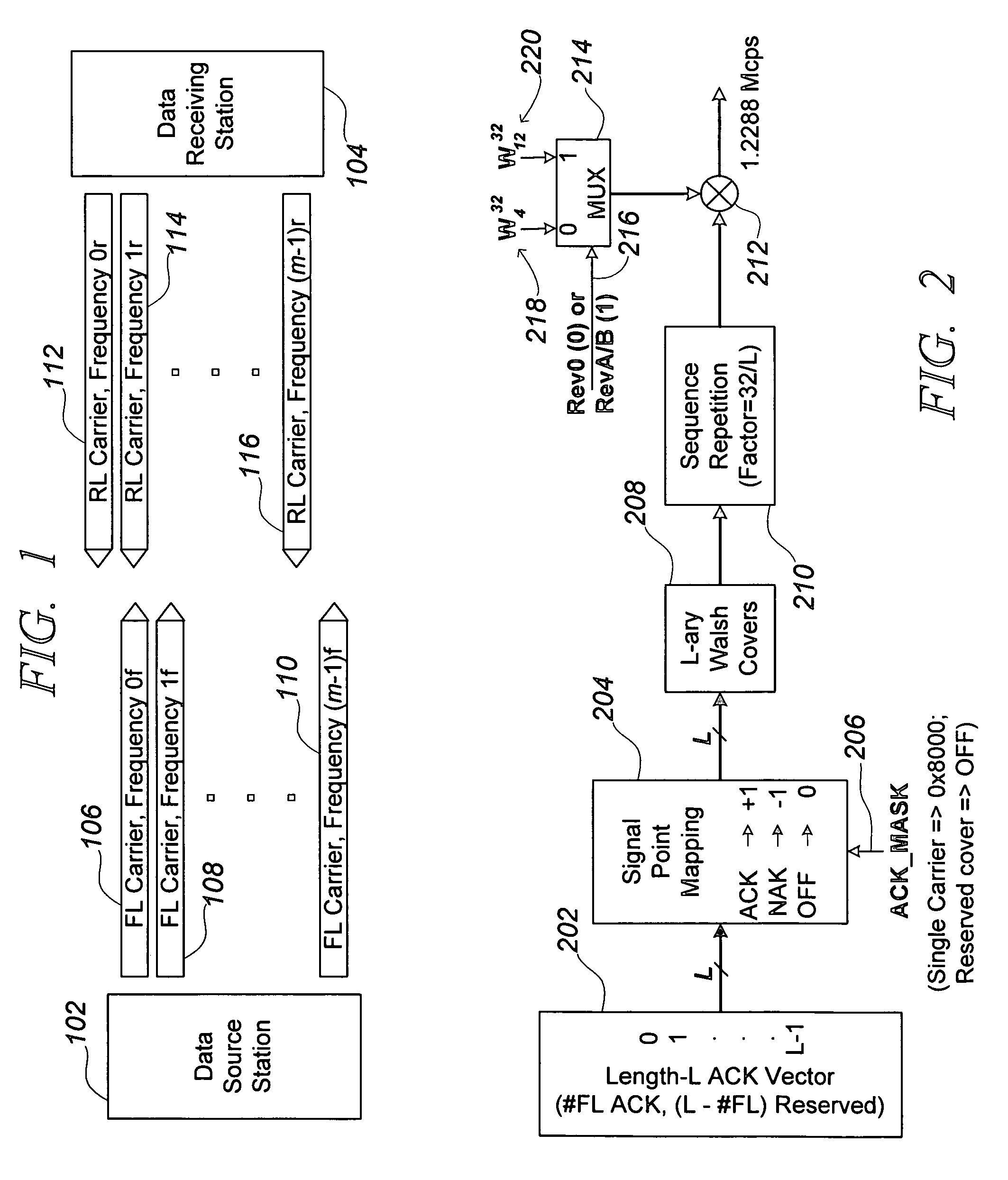Reverse-link structure for a multi-carrier communication system
a communication system and reverse link technology, applied in the field of wireless communication systems, can solve the problems of reducing the ability of receivers to correctly receive their own signals, increasing data rates generally, and reducing reception accuracy
- Summary
- Abstract
- Description
- Claims
- Application Information
AI Technical Summary
Benefits of technology
Problems solved by technology
Method used
Image
Examples
Embodiment Construction
Terminology
[0026]A carrier, or carrier spectrum, is a frequency range of electromagnetic spectrum. In CDMA communications, a carrier may be modulated to convey a multitude of channels distinguished by different codes. As used herein, carriers are assumed to have a fixed bandwidth, though in principle they could be variable. Carriers may, for example, have a bandwidth of 1.25 MHz as is specified by presently-supported standards for CDMA communications in the United States, or a 5 MHz bandwidth as specified for WCDMA systems.
[0027]Asymmetric communication has two distinct meanings. In many communication systems, especially point-to-multipoint systems, a great deal more data is expected to be communicated from a base station point to the numerous remote stations (multipoints) that it serves. Thus, special protocols and carrier assignments may be made to accommodate such serving station / served station asymmetry. However, between any two stations that are in communication, there may be a...
PUM
 Login to View More
Login to View More Abstract
Description
Claims
Application Information
 Login to View More
Login to View More - R&D
- Intellectual Property
- Life Sciences
- Materials
- Tech Scout
- Unparalleled Data Quality
- Higher Quality Content
- 60% Fewer Hallucinations
Browse by: Latest US Patents, China's latest patents, Technical Efficacy Thesaurus, Application Domain, Technology Topic, Popular Technical Reports.
© 2025 PatSnap. All rights reserved.Legal|Privacy policy|Modern Slavery Act Transparency Statement|Sitemap|About US| Contact US: help@patsnap.com



